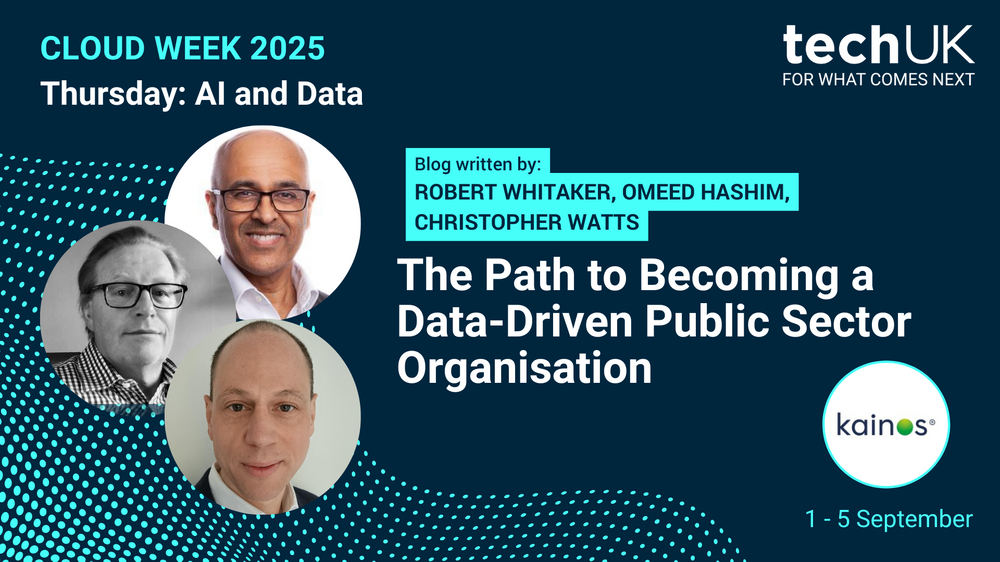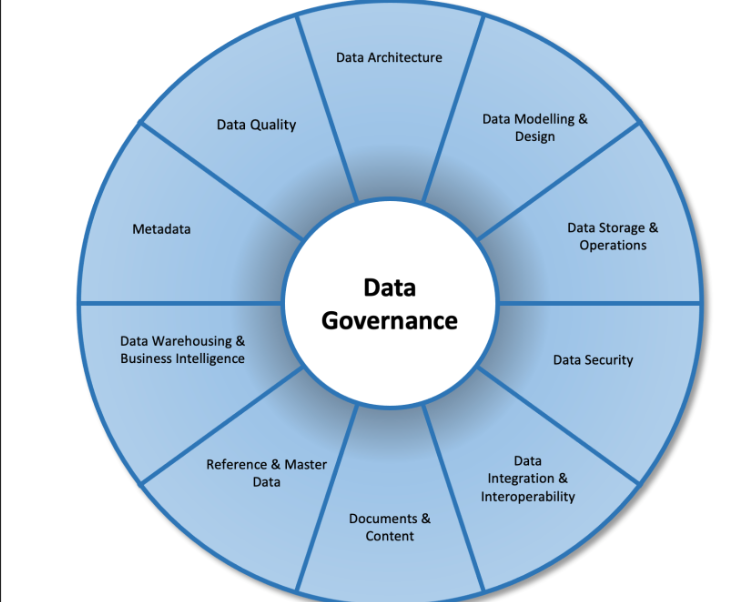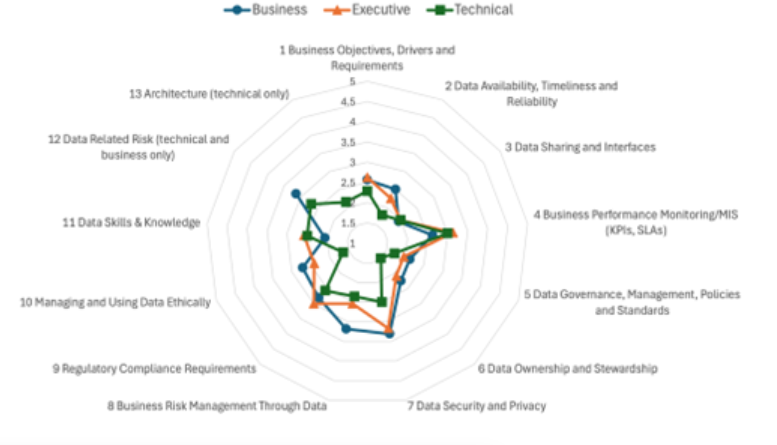The Path to Becoming a Data-Driven Public Sector Organisation (Guest blog from Kainos)

This blog was written by Robert Whitaker, Omeed Hashim, Christopher Watts from Kainos
The UK public sector is generating data at an unprecedented scale — with conservative estimates ranging from over 100 petabytes to multiple zettabytes annually. This explosion is driven by everything from genomics and medical imaging to Ordnance Survey’s geospatial data, open data platforms, and research repositories.
While government bodies are investing heavily in data intelligence and governance to unlock the potential of AI and evidence-based decision-making, the journey toward becoming truly data-driven remains challenging. Persistent issues like siloed systems, poor data quality, unclear ownership, and cultural resistance continue to hold many organisations back.
This is where the Data Management Framework (DAMA) or similar frameworks become essential. It provides a structured approach to tackling challenges such as uncontrolled data sprawl, inconsistent or duplicated data, low-quality information, data security risks, high storage costs, and inefficient AI and analytics workflows. Simply put, as public data volumes soar, so does the urgency for governance at scale.
Typically, the timeline for embedding good data management practices as BAU can take 18 to 48 months, depending on the organisation’s size and its initial data maturity. With Kainos’ proven approach and extensive set of accelerators, this timeline can be significantly reduced, enabling faster and more effective adoption.
So, how can public sector bodies overcome these obstacles and effectively use data to improve outcomes? The answer lies in a strategic transformation based on a best practice data management framework. This is not just a technical fix, but a structured approach to building lasting data maturity and treating data as a strategic asset.
A Structured Approach to Data Management
Becoming a data-driven organisation is a journey requiring a phased approach grounded in best practices, e.g. the DAMA framework, depicted in the following graphic, has several dimensions.

Figure 1: The DAMA Wheel (DAMA-DMBOK)
An effective path to move towards higher data maturity levels can be broken down into three stages:
Stage 1 - Assess Your Starting Point
A Data Maturity Assessment is a valuable first step. This evidence-based tool evaluates your organisation's current data capabilities against key themes like data quality, architecture, governance, security and culture.
This assessment isn't just about benchmarking; it provides a clear view of your strengths and weaknesses. The results directly inform a tailored data strategy and roadmap, helping prioritise investments based on your most critical needs and mission objectives.
An example of one such assessment showing assessment of different parts of the customer organisation carried out by Kainos is shown below:

Based on the NAO 2023 report, DWP carried out a data maturity assessment as part of its digital transformation, identifying siloed legacy systems as a barrier. By addressing these gaps, they improved data sharing across services, enabling faster benefit processing and more personalised citizen services.
The UN International Organisation for Migration (IOM) with its 14k staff and 130+ locations are responsible for helping migrants across the world receive a humane and fair treatment. Our work to support frontline officers transitioning from paper-based reports to AI-Driven dashboards assists in the daily fight against global human trafficking and travel document fraud. It has been shortlisted for the AI Adoption Award at the National AI Awards 2025 and was enabled through establishing a foundational data capability utilising DAMA to empower IOM teams to lead the change.
The result? A self-sustaining ecosystem of AI Champions who are driving innovation from within and leading the charge on IOM’s data-centric vision to and its meaningful impact on displacement and migration.
Stage 2 – Put Principle into Practice
Once your strategy is in place, you can begin to implement impactful actions that build a solid foundation for data-driven operations, for instance:
- Improve Data Quality with a focus on regular data profiling and cleansing. Implement robust data modelling and metadata management approach to ensure data is accurate, consistent, and trustworthy. This is fundamental for maintaining citizen trust and delivering reliable public services.
- Strengthen Data Governance with clear accountability. Appoint Data Stewards to manage data quality and compliance with public sector regulation and form a central governance council to align initiatives across departments.
- Integrate Data Sources to break down silos by using a centralised system to connect datasets and create a unified view that is critical for whole-of-government reporting and collaboration.
- Enable AI and Advanced Analytics by ensuring data is prepared to support modern AI tools and systems. Strong governance is also essential to ensure that AI initiatives are built on reliable data and operate ethically.
- Embed a Data-Driven Culture by overcoming cultural barriers. Empower staff through literacy programs and share internal success stories to highlight the tangible value and benefits of data.
The Government Digital Service (GDS) estimates potential government-wide savings of up to £6 billion per year from using data analytics to tackle fraud and error, based in part on successful interventions by DWP and HMRC.
At Kainos our Data governance and data migration work over the last few years with HMPO (HM Passport Office) in data harmonisation, consolidation and migration to Cloud has resulted in tens of millions of cost savings per annum, enabling the next steps in fully leveraging the data and AI technologies.
Stage 3 - Maintain a Cycle of Improvement
Becoming data-driven is a continuous journey, not a one-time project. Sustained success requires regularly reassessing maturity, evolving governance, and refining practices to address new challenges and opportunities.
This ongoing cycle enables public sector organisations to boost efficiency, strengthen collaboration, and maximise impact for the communities they serve. Adopting these practices shift IT delivery from tactical to strategic, increase adoption, consistency, and accountability across teams. The result: a stronger foundation for data-driven decision-making, interoperability, and operational efficiency.
For more information please contact:





